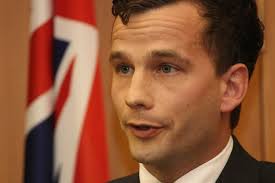


Posted October 29, 2015
It’s rare for political parties with one MP to get much media attention. They get very few opportunities in Parliamentary Question Time, and few resources and time to devote to it.
 However, Act’s David Seymour has received his fair share over recent weeks. While media attention is par for the course for government’s and major oppositions, smaller parties need extra effort to stay on the media stage.
However, Act’s David Seymour has received his fair share over recent weeks. While media attention is par for the course for government’s and major oppositions, smaller parties need extra effort to stay on the media stage.
It’s vital they remain in the minds of potential voters, otherwise many will not even consider them as a possible option at upcoming elections. Act has clearly recognised this and worked hard to stay in the headlines.
Seymour has picked popular issues to focus on recently, and this has kept him in the news. His Bill to allow pubs to be open during Rugby World Cup games is a good example. That got him on prime time news more than once.
Many would have been satisfied with that and forgotten about it, but not Seymour. He has now cleverly got himself back in the news on that issue by hosting his own Champaign Breakfast on World Cup Final day. That will probably see him back again the day after with TV footage of the event itself.
He’s also taken prominent roles on the flag referendum and Euthanasia. These are both emotional issues that media like to focus on.
If he can maintain this for another two years, he may find his party grows in popularity. This is something Peter Dunne hasn’t been able to do for United Future, but most of the publicity around him is in his capacity as a Minister, not party leader. Seymour talks as a government spokesperson around partnership schools, but everything else as Act leader.
Time will tell how Act performs in opinion polls leading up to the 2017 Election.
For more about my media training, contact [email protected]